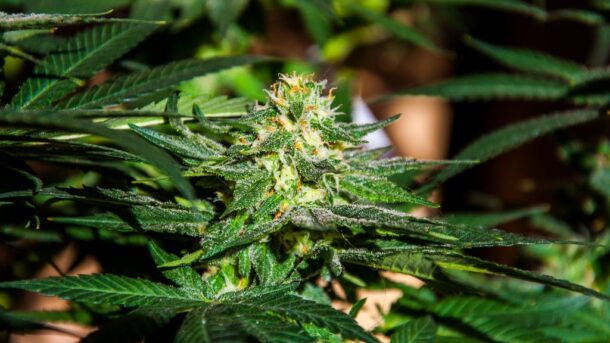The world of cannabis has evolved significantly over the past few decades, with cannabis concentrates emerging as a popular choice for both recreational and medicinal users. These products are known for their high potency and diverse flavor profiles, offering a unique experience compared to traditional cannabis flower. This article explores the intricacies of cannabis concentrates, focusing on their potency and flavor, and provides insights into their production, consumption, and impact on the cannabis industry.
Understanding Cannabis Concentrates
Cannabis concentrates are products that have been processed to extract the most desirable compounds from the cannabis plant, primarily cannabinoids and terpenes. These concentrates come in various forms, including oils, waxes, shatters, and more, each offering different levels of potency and flavor.
Types of Cannabis Concentrates
- Shatter: Known for its glass-like appearance, shatter is a popular concentrate due to its high THC content and purity.
- Wax: With a softer, more pliable texture, wax is easier to handle and often preferred by those who value convenience.
- Oil: Cannabis oils are versatile and can be used in vape pens, edibles, or topically, making them a favorite among users seeking discretion.
- Live Resin: This concentrate is made from fresh, flash-frozen cannabis plants, preserving the full spectrum of terpenes and offering a robust flavor profile.
Potency: The Power of Concentrates
The primary appeal of cannabis concentrates lies in their potency. These products can contain THC levels ranging from 50% to over 90%, significantly higher than the average cannabis flower, which typically contains 10-25% THC. This high concentration allows users to achieve the desired effects with smaller amounts, making concentrates a cost-effective option for many.
The Science Behind Potency
The potency of cannabis concentrates is achieved through various extraction methods that isolate cannabinoids and terpenes from the plant material. Common extraction techniques include:
- Solvent-based extraction: This method uses solvents like butane or CO2 to dissolve cannabinoids and terpenes, which are then purged to leave behind a concentrated product.
- Solventless extraction: Techniques such as rosin pressing use heat and pressure to extract cannabinoids without the use of solvents, resulting in a cleaner product.
Each method has its advantages and drawbacks, influencing the final product’s potency and purity. For instance, solvent-based extractions can achieve higher THC levels but may leave residual solvents if not properly purged. Solventless methods, while cleaner, may not reach the same potency levels.
Flavor: The Terpene Experience
Beyond potency, the flavor of cannabis concentrates is a significant factor for many users. The flavor is primarily determined by terpenes, aromatic compounds found in cannabis that contribute to its distinct taste and aroma. Different strains have unique terpene profiles, resulting in a wide range of flavors from fruity and sweet to earthy and spicy.
Preserving Flavor in Concentrates
The process of creating concentrates can impact the terpene profile, and thus the flavor, of the final product. Some methods are better at preserving terpenes than others:
- Live Resin: By using fresh, flash-frozen cannabis, live resin retains a higher concentration of terpenes, offering a more flavorful experience.
- Cold Extraction: This technique minimizes heat exposure, helping to preserve delicate terpenes that might otherwise degrade.
Consumers seeking a rich flavor experience often gravitate towards concentrates like live resin or those produced using cold extraction methods.
Consumption Methods
The way cannabis concentrates are consumed can also affect the experience. Common methods include:
- Dabbing: This involves vaporizing a small amount of concentrate on a heated surface and inhaling the vapor. Dabbing is popular for its efficiency and ability to deliver potent effects quickly.
- Vaping: Using a vape pen or vaporizer, users can enjoy concentrates discreetly and with less odor than traditional smoking.
- Edibles: Concentrates can be infused into food products, offering a smoke-free option with long-lasting effects.
Each method offers a different experience, allowing users to choose based on their preferences and lifestyle.
The Impact on the Cannabis Industry
The rise of cannabis concentrates has had a significant impact on the cannabis industry. Their popularity has driven innovation in extraction technologies and consumption devices, leading to a more diverse market. Concentrates have also opened new opportunities for medical cannabis patients, providing potent options for those needing high doses of cannabinoids.
Market Trends and Statistics
According to recent market reports, the demand for cannabis concentrates continues to grow. In 2022, concentrates accounted for approximately 27% of the legal cannabis market in the United States, with sales projected to increase in the coming years. This growth is attributed to the increasing acceptance of cannabis, advancements in extraction technology, and the appeal of potent, flavorful products.
Conclusion
Cannabis concentrates offer a potent and flavorful alternative to traditional cannabis products. With a variety of forms and consumption methods, they cater to a wide range of preferences and needs. As the cannabis industry continues to evolve, concentrates are likely to play an increasingly prominent role, driven by consumer demand for high-quality, effective products. Whether for recreational enjoyment or medicinal use, cannabis concentrates provide a unique experience that continues to captivate users worldwide.




